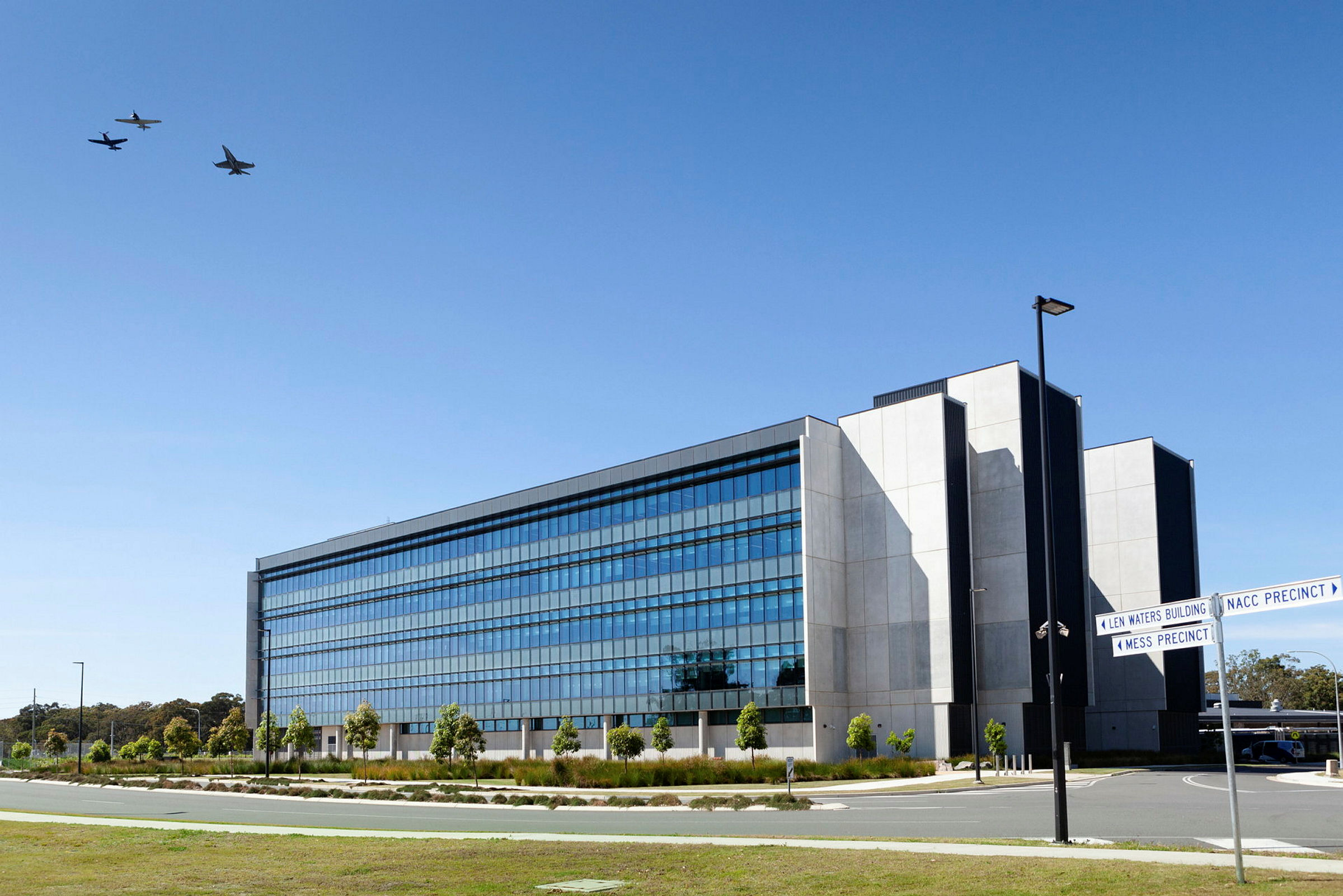RAAF Base Williamtown is home to the tactical fighter element of the Air Combat Group and the Airborne Early Warning and Control (AEW&C) element of Surveillance and Response Group.
RAAF Base Williamtown is at the centre of a multimillion-dollar infrastructure modernisation and upgrade program in order to better support the arrival of the RAAF’s fleet of F-35A Joint Strike Fighters and other force multiplying capabilities, like the E-7A Wedgetail Airborne Early Warning, Command & Control aircraft.
Williamtown Redevelopment Stage 1 is worth $149 million, while the Aircraft Clear Water Rinse Facility is worth $3 million.
The Williamtown Redevelopment Stage 2 (2014 – 2019) is worth $219 million, which is supported by the New Air Combat Capability Works worth $679 million and a Runway Extension worth $200 million.
This description of the upgrades at RAAF Base Williamtown published in an October 30, 2020 article came in the context of the dedication of one of the new buildings being constructed at the airbase.
This is how the RAAF described the dedication ceremony held on October 23, 2020 at the airbase.
Australia’s only known Indigenous World War II fighter pilot has been honoured with the naming of a building at RAAF Base Williamtown.
The new five-storey accommodation complex was dedicated to the memory of Leonard ‘Len’ Waters in a ceremony held on October 23.
Len Waters enlisted in the Air Force in August 1942 as an aircraft mechanic and went on to earn his wings in July 1944.
He learnt to fly in Tiger Moths and Wirraways before joining No. 78 Squadron where he flew Kittyhawks.
During nine months of active service, Mr Waters flew 95 sorties in the Pacific campaign, operating from Noemfoor, Morotai and Tarakan.
He discharged from the Air Force on January 18, 1946, with the rank of Warrant Officer.
Mr Waters died from pneumonia in August 1993, aged 69, and is survived by his wife and six children.
Air Commander Australia Air Vice-Marshal Joe Iervasi said it was a great honour to dedicate the building to Mr Waters.
“It is important to recognise and embrace the stories of all who have served, and continue to serve, so we can truly be the Air Force of Australians for all Australians,” Air Vice-Marshal Iervasi said.
The dedication ceremony was attended by Mr Waters’ wife, Gladys, and other members of the Waters family, as well as Warrant Officer of the Air Force Fiona Grasby.
The Welcome to Country and a smoking ceremony were presented by Elders of the Worimi people who are the traditional owners of the land where RAAF Base Williamtown is located.
A significant feature of the building’s interior is the expansive artwork and accompanying stories created by Indigenous artists Saretta Fielding and Melissa Lilley.
Group Captain Peter Cluff, of RAAF Base Williamtown, said the prominent display of the Indigenous art and stories was a symbol of the admiration and respect that exists between the base and the Worimi people.
“The relationship between RAAF Base Williamtown and the Worimi people has been forged over many years, and will continue to grow and thrive for years to come, as highlighted by the dedication of this building to Len Waters,” Group Captain Cluff said.
Mr Waters’ memory also has been commemorated since his death with a stamp issued as part of Australia Post’s Australia Remembers campaign; the naming of a park in Inala, Queensland, where he lived for more than 33 years; the naming of a street in Ngunnawal in Canberra; and, a monument in St George, Queensland.


